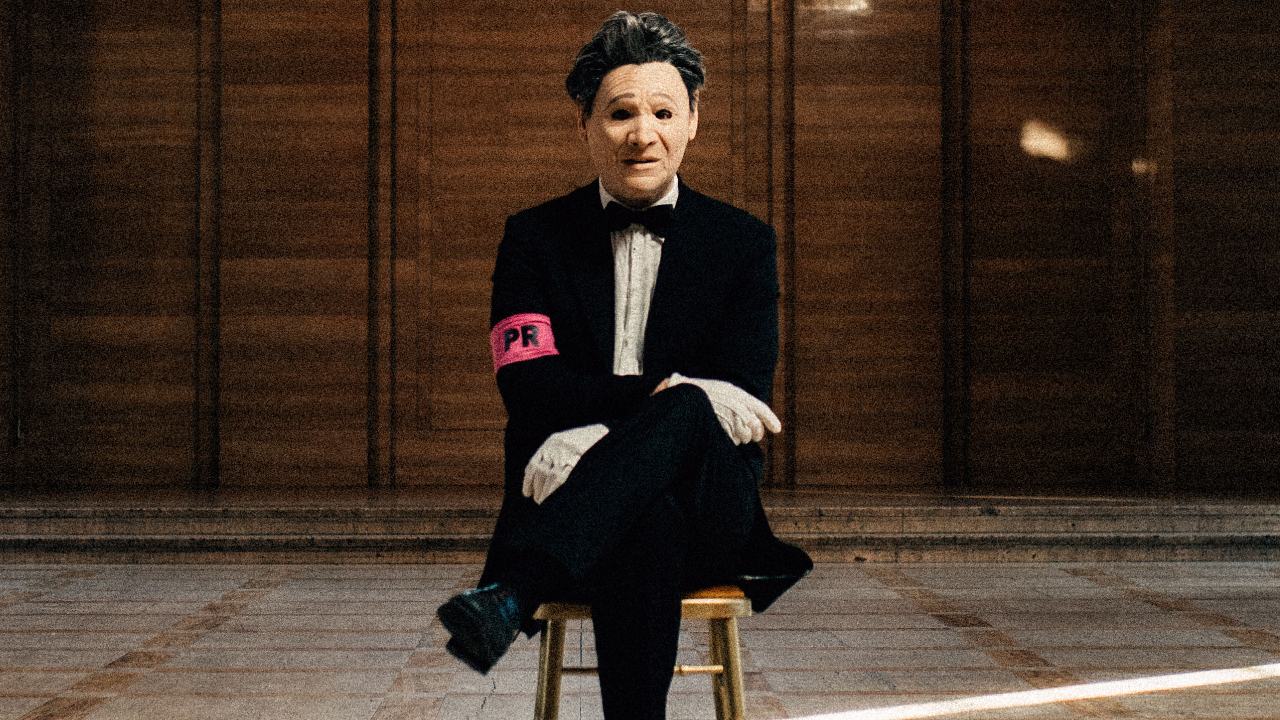"People thought we were Nazi sympathisers, and nothing could be further from the truth." The highs, lows, controversies and epic comebacks of Slayer
How one Mercyful Fate-worshipping little band from California changed the face of metal forever
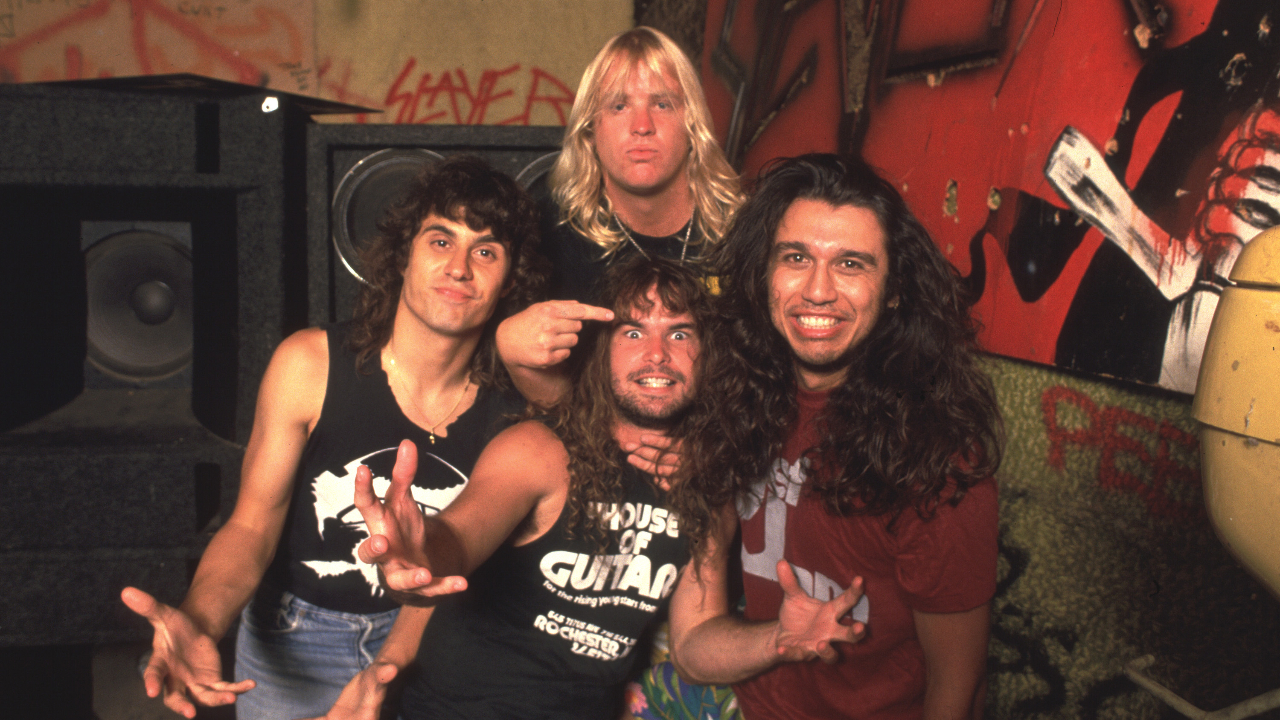
Few bands have left more of a mark on any music scene than the indelible bloody handprint Slayer have left on metal. Their blistering speed, controversial themes and uncompromising attitude have had a profound influence, not only on their thrash metal peers, but on death metal, black metal and every other extreme subgenre to come.
When asked to sum up his band’s enduring impact on the metal scene, guitarist Kerry King shrugs. “It’s hard for me to answer, because that sounds like a question for fans. I think it’s important, and I think you can see that just by how people react to us now, coming back and playing. Just the mention of Slayer sets off frenzies, because that’s what Slayer fans do. They scream, ‘Slayer!’ everywhere.”
Indeed, ‘Slayer!’ – more properly pronounced ‘SLAYYYYYAAAARGHH!’ - has become a rallying cry for metalheads worldwide. In some ways they’ve transcended music to become a recognisable cultural touchstone. There’s even an annual International Day Of Slayer every June 6, with the inaugural event having launched on 06/06/06.
It’s all a far cry from the band that struggled to get a gig in a local Los Angeles scene dominated by the likes of Ratt, Dokken and rising stars Mötley Crüe.
“We didn’t fit in,” vocalist and bassist Tom Araya recalls. “We didn’t look like guys trying to look girls. And we were no different than our fans. Club owners would tell us we couldn’t use or do things for our show, and we did them anyway and got banned from the clubs.”
Slayer’s first ever show took place at South Gate Park Auditorium, Los Angeles, on Halloween 1981, but as time went on they gravitated further and further from the neon strips of LA itself.
“The LA scene predominantly was hair metal back then, Mötley Crüe and all that followed. So we pretty much were an Orange County band, just because we did not want to be under that hair metal moniker, which was synonymous with Hollywood,” Kerry explains. “Metallica was out there too, before they became a Bay Area band, so there was a lot of thrash going on in Orange County. We made it the home of what became thrash metal, actually.”
Sign up below to get the latest from Metal Hammer, plus exclusive special offers, direct to your inbox!
Tom insists that there was a sense of camaraderie between the new breed of bands with “no competition” as they grew up together.
“I think it was a little bit of both, actually,” considers Kerry. “In the early days we were all friends, but we were young men and there was definitely competition. I remember we would get our hands on a Metallica demo and say, ‘Alright, this is where they are going, we have got to outdo that.’ And I know for a fact that Kirk [Hammett] and probably James [Hetfield] as well would get our records and say, ‘Oh, we have got to go beat that.’”
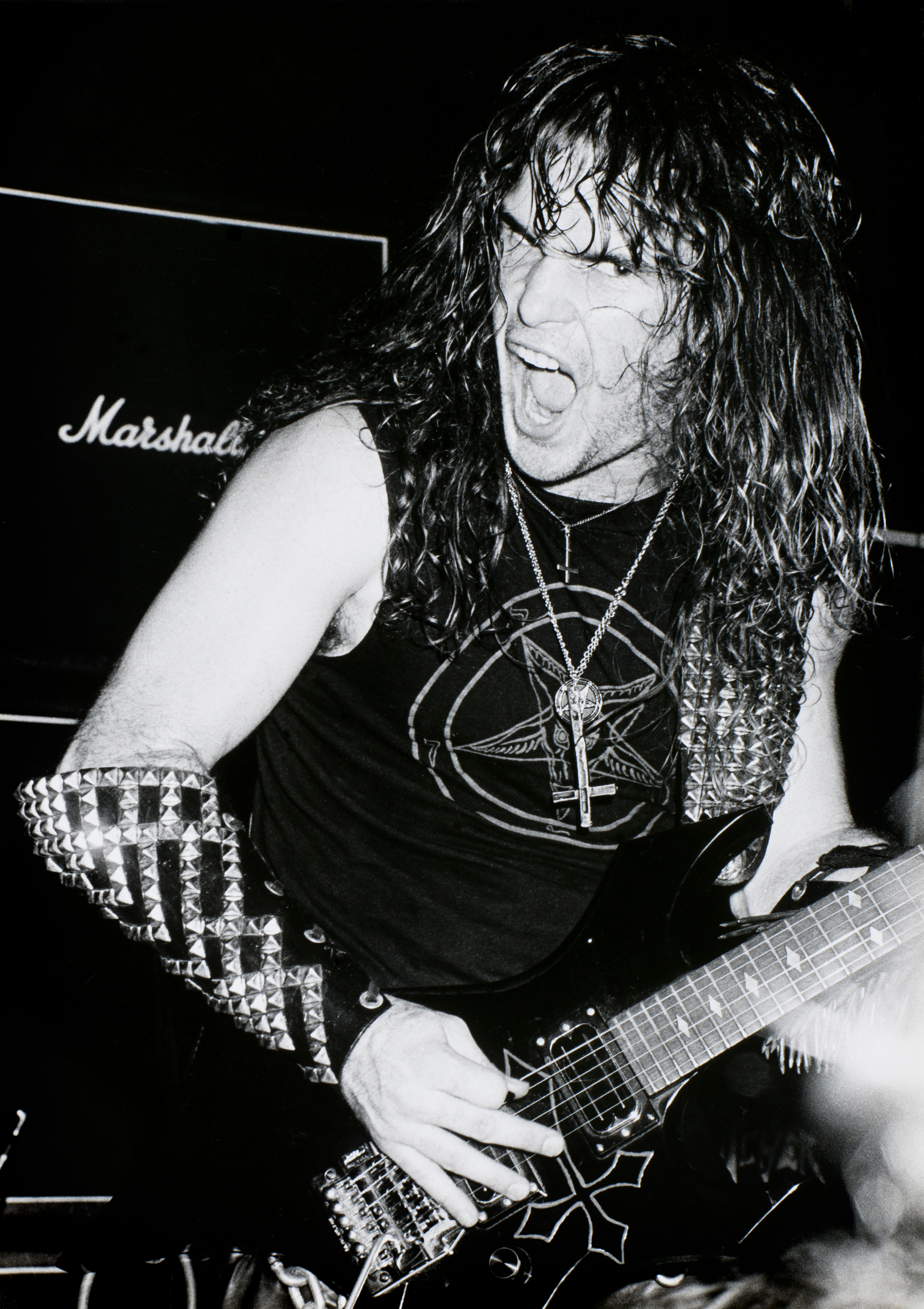
The first Slayer track to feature on record was Aggressive Perfector , which followed Metallica’s Hit The Lights and Overkill’s No Holds Barred onto Metal Blade’s influential Metal Massacre series, appearing on 1983’s Metal Massacre III.
It was followed by full-length debut Show No Mercy on the same label later that year. Kerry recalls recording it on a graveyard shift from midnight until 6am each night, to get cheaper studio rates. While it’s recognised as an influential release now, it was still very much a work in progress, and a primitive version of what Slayer would go on to become.
“You gotta understand, when our first record came out, Jeff [Hanneman, guitar] and I were 19 years old. I think Dave [Lombardo, drums] was 18. We were just a bunch of dumb teenagers trying to carve out a space in the world for ourselves,” Kerry says. “Honestly, everybody hated it at first. It took a while for people to come around. I remember some of the early reviews of Show No Mercy, people just despised it.”
Not everyone failed to get it, of course. “Someone got us a tape of Show No Mercy, and we were like, ‘These guys are just like us, this is crazy!” Exodus guitarist Gary Holt told Metal Hammer last year. “‘We want to kill shit and hack things up with machetes with them!’”
1984’s Haunting The Chapel EP was a huge leap forward, but for most it was 1985 full-length follow-up Hell Awaits that really saw Slayer start to come into their own. Kerry still sees it as heavily derivative of Danish Satanic occult metal kingpins Mercyful Fate.
“The influence was all over that record,” he says. “We were still figuring out who we were, so we were still emulating our heroes. To me, it was a step forward. Yeah, we did mature as songwriters and musicians, but that one was still us chasing our heroes,” the guitarist says.
If Hell Awaits wore its influences heavily, Slayer’s third album was something else. Released in 1986 and produced by rising star Rick Rubin, Reign In Blood stripped the comparatively convoluted approach of its predecessor down to the bloody bone. It was an instant classic of jugular-slicing thrash excellence, that still stands as one of metal’s most perfectly formed and important releases nearly four decades on. Which isn’t a bad achievement for a collection of songs weighing in at less than half an hour.
“We didn’t realise how important it was at the time. But we knew we had something special when we noticed that the album was only 28 minutes,” says Tom.
“The funny thing about that [is] when we were rehearsing it, it came in around 33 or 34 minutes. But then when we actually recorded it, and put it on vinyl or cassette or whatever back then, it came in at around 28 minutes,” Kerry adds. “Familiarity sped it up and Dave was notorious for speeding things up, so it just became faster as a whole.”
The guitarist acknowledges that Reign In Blood was the blueprint for the classic Slayer sound that the metal world would come to know and love. “It was the maturing of Slayer, so to speak, and the beginning of the sound everybody knows Slayer as today,” he says. “I think not only was it a great recording with great songs, but it was also a change as to exactly what we sounded like and how we were going to sound for the next 40 years.”
The album didn’t have the same commercial success as Metallica’s own 1986 milestone, Master Of Puppets, but it peaked at No.94 in the US Billboard charts, which was impressive enough for such an extreme set of songs. The band also saw their live shows getting more frenzied and chaotic. New Jersey thrashers Overkill supported Slayer on the US Reign In Blood tour and frontman Bobby ‘Blitz’ Ellsworth recalls seeing someone plunging from the balcony of The Forum in Los Angeles during Slayer’s set.
“It was purposeful, his way of showing his exhilaration,” the singer told Hammer in 2021. “Sure, those gigs were violent. But it wasn’t as if the violence escalated – it was as if someone just pushed a button. You didn’t see the crowd get whipped into this frenzy – the frenzy was instantaneous.”
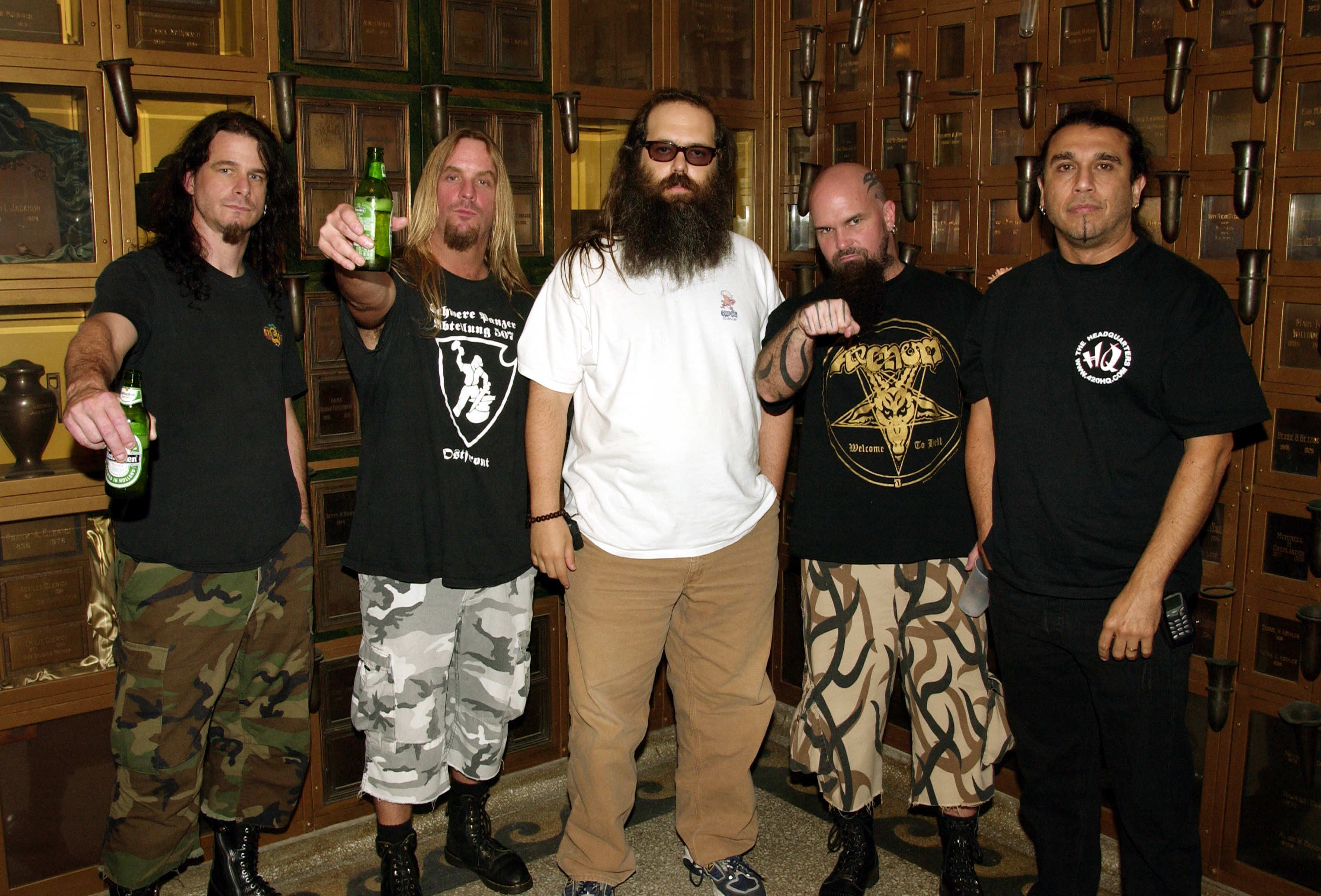
Along with the attention came an increased scrutiny of Slayer’s lyrics, particularly the Hanneman-penned album opener, Angel Of Death, which was marked by its bowel-churning scream and a factual dissection of Nazi doctor Josef Mengele and his death camp experiments.
Columbia Records refused to distribute the Def Jam-released album, leading to a delay in its release before Geffen came onboard. It also fuelled accusations in certain quarters that Slayer were glorifying their subject matter.
“It was written documentary style. It was not writing in praise of Nazi Germany. It was not writing in praise of Josef Mengele,” Kerry states emphatically. “Slayer never backed away from writing about controversial things, and Jeff was very much into World War II. That is where his writing interest was. A bunch of people took it the wrong way and thought we were Nazi sympathisers, and nothing could be further from the truth. It was a horrible time in world history, but it is a historic fact, and it is something that should be brought up so people do not forget.”
Controversy aside, Reign In Blood boosted Slayer’s profile but they weren’t exactly drowning in the trappings of success. Dave Lombardo – whose propulsive rhythms and furious blastbeats played a major part in Slayer’s sound – left the band for the first time during a tour supporting W.A.S.P. He would later tell us that he was not making enough money to cover his bills.
“I was like, ‘Fuck this, man, I’m not going to put all my fucking effort into this if we’re signed to a major label and going out on these extravagant tours and I’m coming home with no money’,” he explained.
The band recruited Tony Scaglione from New York thrashers Whiplash to complete the tour, with Dave returning to the fold in 1987. Having made the ultimate thrash album with Reign In Blood, the band decided it was time to take a different tack when it came to 1988 follow-up South Of Heaven.
“We were like, ‘Alright, we made this super-blistering fast record. We knew we did not want to do Reign In Blood part two,” Kerry recalls. “The mindset was to go the heavier route. We still had speedy songs, but there is a lot more heavy stuff we did intentionally to offset the fast songs when you play it live.”
That experiment also set up the band to deliver a mix of tempos and styles on 1990’s Seasons In The Abyss. Backed by money from Def American, the label Rick Rubin founded after leaving Def Jam, it also saw Slayer film music videos for War Ensemble and the title track – the latter a big-budget epic shot in Egypt, with a full complement of horse riders and the pyramids as a backdrop. Both received heavy rotation on MTV, and Kerry says it was “another piece in the puzzle of world domination, getting into as much media as people could see and hear”.
The album broke the Top 40 in the US album charts and the Top 20 in the UK, making it their biggest-selling album. The rest of the 90s were not quite so kind, however. Dave departed again (to be replaced by former Forbidden drummer Paul Bostaph) and, like many other metal bands, they struggled with the changing musical landscape.
The end of the decade saw them release 1998’s divisive Diabolus In Musica, which saw Kerry step back from songwriting and the band dip into groove and nu metal with mixed results. The new millennium saw them roar back to form with the blistering God Hates Us All in 2001.
“I realised I messed up by not being as focused,” says Kerry. “Jeff realised the same thing, and I think that’s what made that album particularly sound like it has teeth. That one was like, ‘Hey, we messed up the entire thing in the 90s, but now we’re back and pissed off.’”
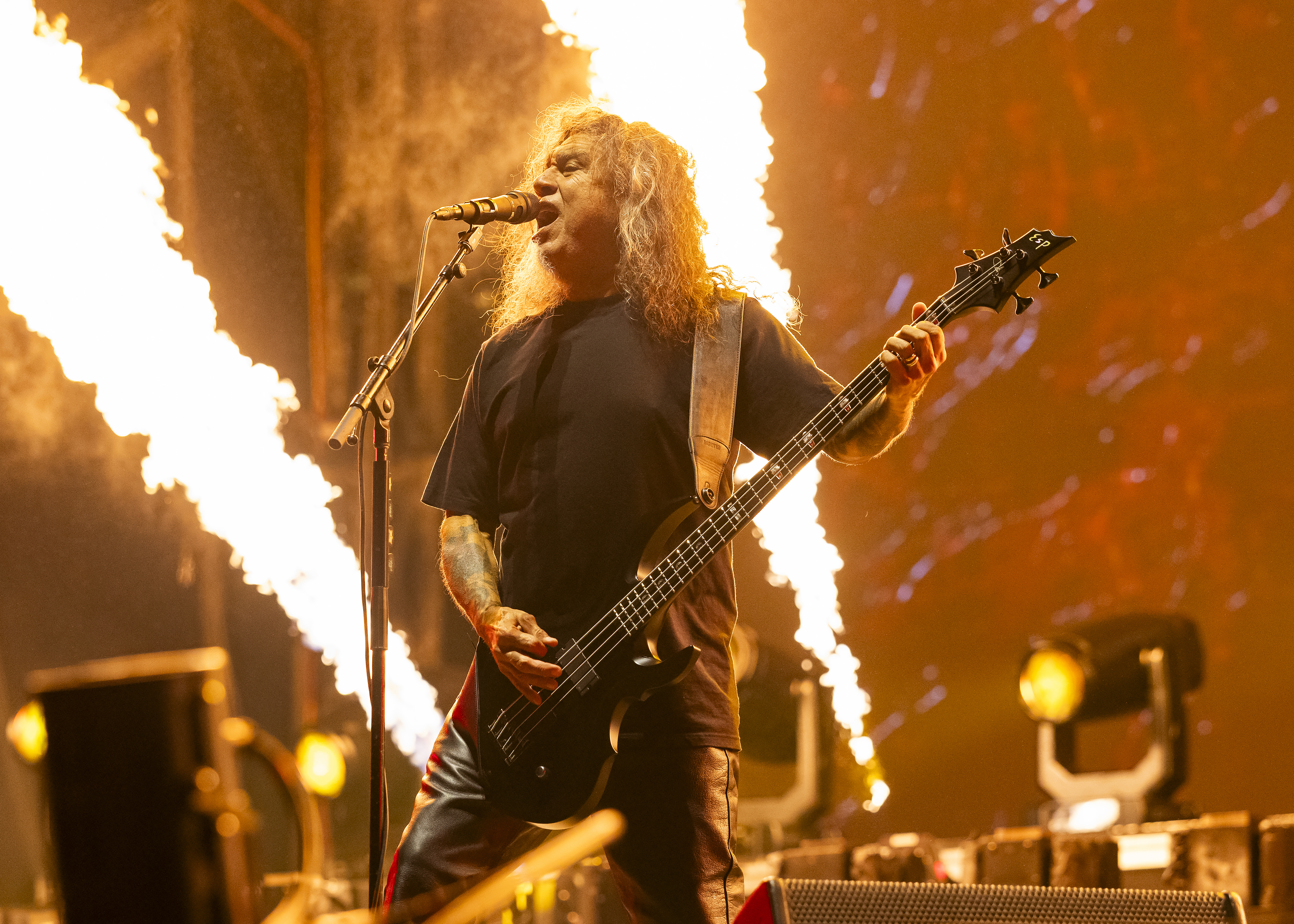
Dave would also return to the fold for the next couple of albums, before leaving once more following 2009’s World Painted Blood. That would also be their last with Jeff Hanneman, who tragically died of liver failure in 2013.
“He came in, he introduced the band to punk,” says Kerry of his late writing and six-string partner. Good friend, and I loved him. It’s hard to put into words but I often think, ‘What would Jeff think of this album?’, be it Repentless, be it [Kerry King solo album] From Hell I Rise. I’m like, ‘I think Jeff would like this record,’ because Jeff was still a metalhead too.”
2015’s Repentless would be the band’s last studio album, and Slayer announced their farewell tour in 2018 – with their final show taking place at the LA Forum on November 30, 2019.
Except, it turned out that it wasn’t quite the last. They performed at a couple of US festivals last year and had two huge headlining shows lined up in Cardiff and London this summer, as well as Ozzy Osbourne’s farewell Back To The Beginning show in Birmingham.
“I don’t want to confuse this for fans. Slayer is not going to tour anymore. We come out, we do special occasion shows so people can come check it out,” Kerry says. “I’m super-happy to be part of the last Black Sabbath show. That means more to me than I could ever convey.”
They helped see off some true icons at that show, but Slayer’s own legendary status as one of the most explosive and influential metal bands of all time is already assured.
Check out our range of Slayer merch over at the official Metal Hammer store
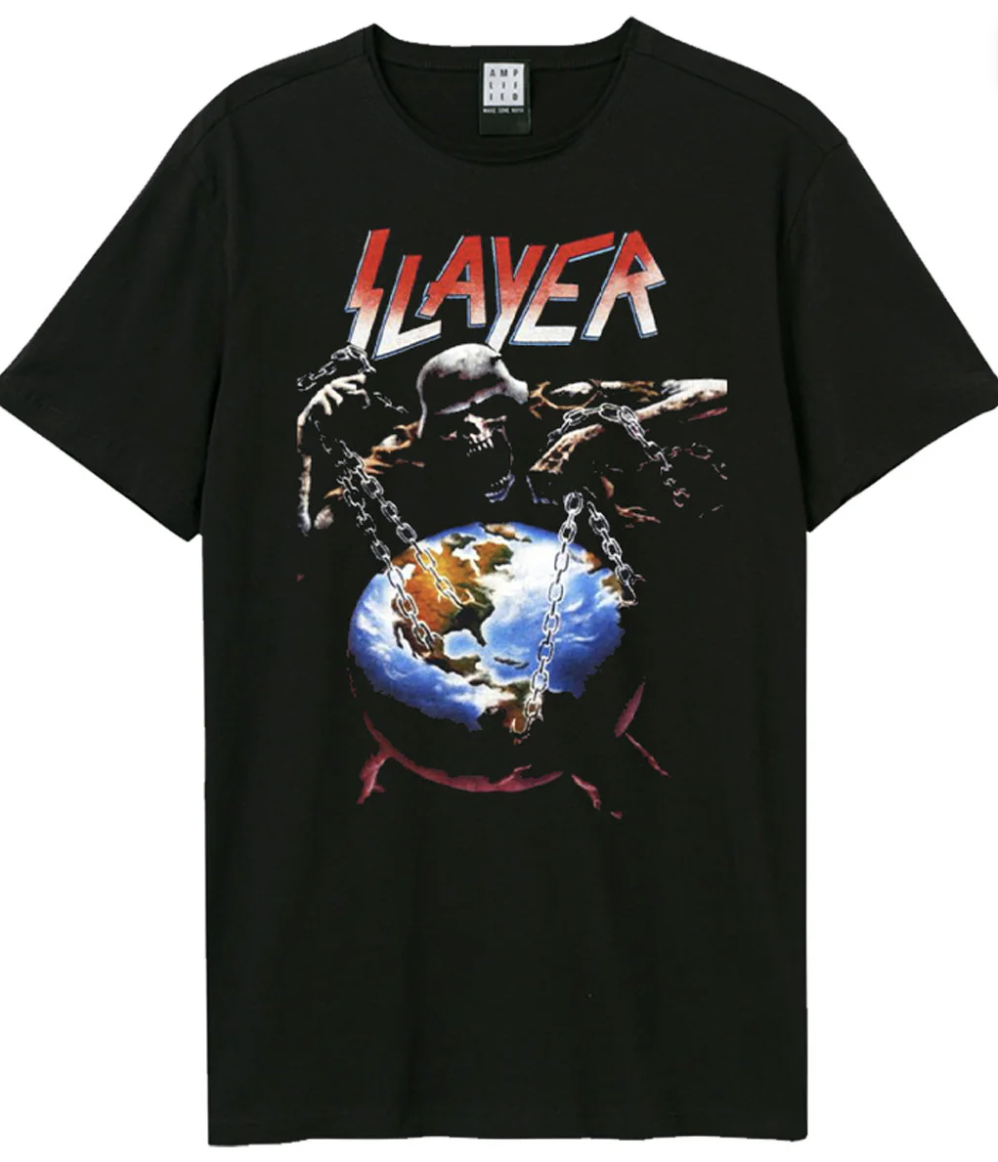
Paul Travers has spent the best part of three decades writing about punk rock, heavy metal, and every associated sub-genre for the UK's biggest rock magazines, including Kerrang! and Metal Hammer.
You must confirm your public display name before commenting
Please logout and then login again, you will then be prompted to enter your display name.
